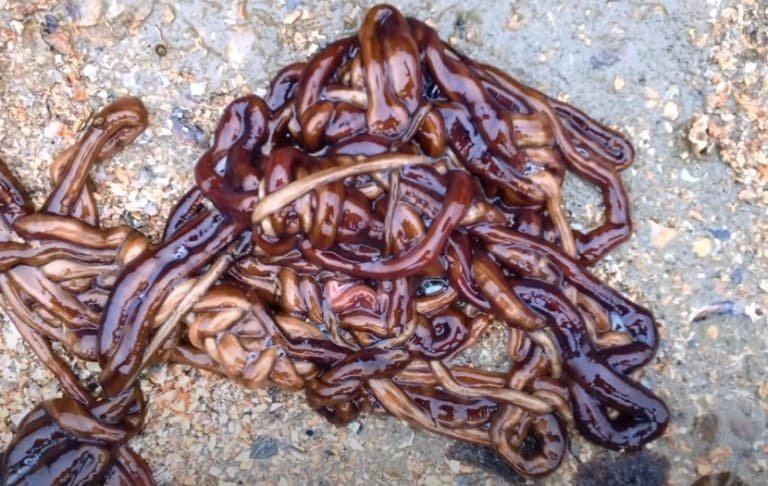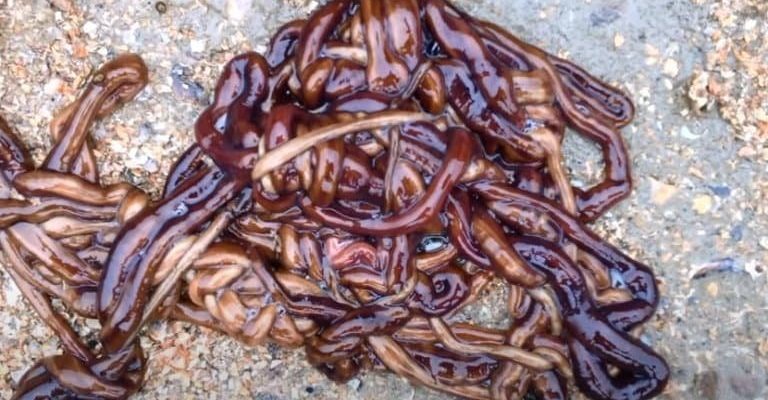
Now, you might be wondering how these incredible creatures grow to such staggering lengths. Bootlace worms are not just long; they’re also fascinating in their biology and behavior. Just like a tree grows rings as it ages, these worms have unique growth patterns that make them stand out. So, grab your favorite beverage, and let’s dive into the amazing world of Bootlace worms and uncover the secrets behind their impressive size.
What Are Bootlace Worms?
Bootlace worms, scientifically known as *Lineus longissimus*, are a type of **nemertean** or ribbon worm. Found mostly in the North Atlantic, they prefer sandy or muddy habitats where they can burrow and hide. Despite being worms, they’re nothing like the earthworms you might find in your backyard. Instead, they have a unique body structure, long and slender, which allows them to navigate through their underwater homes easily.
Imagine these worms glowing in vibrant hues, almost like a work of art floating in the sea. They’re not just passive organisms; Bootlace worms are predatory. They use a unique feeding strategy, extending a sticky proboscis to catch prey like crustaceans and small fish. Isn’t that fascinating? It’s like they’re fishing with a secret weapon!
How Do Bootlace Worms Grow So Long?
The growth of Bootlace worms is a remarkable process. They start life as tiny larvae, hardly noticeable. Over time, they undergo several molts, shedding their outer layer as they grow. This process is somewhat similar to how a caterpillar transforms into a butterfly, but in the case of Bootlace worms, they keep growing longer rather than changing shape entirely.
One key factor in their impressive growth is their **regenerative abilities**. If a Bootlace worm loses a segment, it can regrow it! This not only helps them survive but also supports their growth. With enough time and the right conditions, a Bootlace worm can continue to grow without any significant barriers. Pretty mind-blowing, right?
Growth Environment: What Matters?
The environment where Bootlace worms thrive plays a crucial role in their growth. They prefer **cooler waters** found in the North Atlantic, where they can feed on various marine life. The availability of food, especially small crustaceans, is vital for their growth. Without the right diet, even the mightiest Bootlace worm can struggle to reach its full potential.
Another factor is the **habitat structure**. Bootlace worms are often found hiding in the seafloor’s sediments. This environment provides them protection from predators while giving them access to food. A safe and rich environment is like a buffet for these worms, allowing them to grow as long as they can.
Reproduction: The Secret to Longevity
Bootlace worms have an interesting approach when it comes to reproduction. Instead of laying eggs, they reproduce through **fragmentation**. What does this mean? Well, when a Bootlace worm gets stressed or is in danger, it might just break into pieces. Each piece, if large enough, can regenerate into a new worm. This not only aids in population growth but also enhances their survival rate in harsh conditions.
Let’s think of this like a sci-fi tale—one worm’s stress becomes a new beginning for several others! This form of reproduction means that Bootlace worms can sustain themselves even when facing challenges, contributing to their impressive size over generations.
Why Are Bootlace Worms Important?
You might be curious why knowing about Bootlace worms matters. For starters, they play a vital role in marine ecosystems. As predators, they help control the populations of smaller marine creatures, contributing to the balance in their habitats. Their long size also means they often provide a significant biomass in the sea floor communities.
Moreover, studying these worms can lead to insights into evolutionary biology. Understanding how they grow so long and regenerate can offer clues to scientists about growth patterns in other organisms, including humans. So, while they might seem like just another worm in the ocean, Bootlace worms actually provide significant lessons for science and ecology.
Human Encounters and Fascination
While Bootlace worms are mostly hidden from view, they occasionally come into contact with humans, especially in the coastal waters of Europe. Fishermen might find them while trawling, and nature lovers may accidentally stumble upon them while exploring tide pools. Their unique appearance and impressive size often spark curiosity and wonder.
People have been known to mistake them for other creatures due to their length and movement. It’s not uncommon for someone to shout, “Look at that giant snake!” as they encounter a Bootlace worm wriggling through the water. This fascination underscores the importance of education and awareness about marine life.
Bootlace worms are truly one of nature’s wonders. Their ability to grow over 50 meters, reproduce through fragmentation, and play essential roles in their ecosystems makes them remarkable organisms. Understanding these worms gives us a glimpse into the complexity of marine life and highlights the importance of preserving our oceans.
Next time you think about the ocean and its inhabitants, remember the Bootlace worm, the long, mysterious creature cruising through the depths. It’s a reminder of how much we still have to learn about the world beneath the waves. So, whether you’re a marine enthusiast or just a curious mind, keep exploring; who knows what other amazing surprises the ocean holds!

